Sun Fizz Fin keel
Sailboat specifications
The Sun Fizz is a 38’6” (11.75m) cruising sailboat designed by Philippe Briand (France). She was built between 1980 and 1986 by Jeanneau (France) with 651 hulls completed. The Fin keel version adopts a classical fin configuration, the easiest option to provide a low center of gravity.
The Sun Fizz is as well listed, on Boat-Specs.com, in Keel and centerboard version (see all the versions compared).
The Sun Fizz is as well listed, on Boat-Specs.com, in Keel and centerboard version (see all the versions compared).
Sun Fizz's main features
- Model
- Sun Fizz
- Version
- Fin keel
- Hull type
- Monohull
- Category
- Offshore cruising sailboat
- Sailboat builder
- Sailboat designer
- Country
- France
- Construction
- Hull and deck: GRP (glass reinforced polyester)
- Number of hulls built
- 651
- First built hull
- 1980
- Last built hull
- 1986
- Appendages
- Keel : fin without bulb
- Helm
- Single helm wheel
- Rudder
- Single spade rudder
- Unsinkable
- No
- Trailerable
- No
- Former French navigation category
- 1
- Standard public price ex. VAT (indicative only)
- N/A €
Sun Fizz's main dimensions
- Overall length
- 40’ 5”12.3 m
- Hull length
- 38’ 6”11.75 m
- Waterline length
- 33’ 6”10.2 m
- Beam (width)
- 12’ 7”3.85 m
- Draft
- 6’ 5”1.95 m
- Light displacement (MLC)
- 16094 lb7300 kg
- Ballast weight
- 6614 lb3000 kg
- French customs tonnage
- 15.40 Tx
Sun Fizz's rig and sails
- Upwind sail area
- 888 ft²82.5 m²
- Downwind sail area
- 1539 ft²143 m²
- Mainsail area
- 355 ft²33 m²
- Genoa area
- 533 ft²49.5 m²
- Solent area
- 318 ft²29.5 m²
- Jib area
- 183 ft²17 m²
- Stormjib area
- 86 ft²8 m²
- Symmetric spinnaker area
- 1184 ft²110 m²
- Rigging type
- Sloop Marconi masthead
- Mast configuration
- Deck stepped mast
- Rotating spars
- No
- Number of levels of spreaders
- 2
- Spreaders angle
- 0 °
- Spars construction
- Aluminum spars
- Standing rigging
- 1x19 strand wire
Sun Fizz's performances
- Upwind sail area to displacementiThe ratio sail area to displacement is obtained by dividing the sail area by the boat's displaced volume to the power two-thirds.
The ratio sail area to displacement can be used to compare the relative sail plan of different sailboats no matter what their size.
Upwind: under 18 the ratio indicates a cruise oriented sailboat with limited performances especially in light wind, while over 25 it indicates a fast sailboat. - 236 ft²/T21.92 m²/T
- Downwind sail area to displacementiThe ratio sail area to displacement is obtained by dividing the sail area by the boat's displaced volume to the power two-thirds.
The ratio sail area to displacement can be used to compare the relative sail plan of different sailboats no matter what their size. - 409 ft²/T38 m²/T
- Displacement-length ratio (DLR)iThe Displacement Length Ratio (DLR) is a figure that points out the boat's weight compared to its waterline length. The DLR is obtained by dividing the boat's displacement in tons by the cube of one one-hundredth of the waterline length (in feet).
The DLR can be used to compare the relative mass of different sailboats no matter what their length:
a DLR less than 180 is indicative of a really light sailboat (race boat made for planning), while a DLR greater than 300 is indicative of a heavy cruising sailboat. - 195
- Ballast ratioiThe Ballast ratio is an indicator of stability; it is obtained by dividing the boat's displacement by the mass of the ballast. Since the stability depends also of the hull shapes and the position of the center of gravity, only the boats with similar ballast arrangements and hull shapes should be compared.
The higher the ballast ratio is, the greater is the stability. - 41 %
- Critical hull speediAs a ship moves in the water, it creates standing waves that oppose its movement. This effect increases dramatically the resistance when the boat reaches a speed-length ratio (speed-length ratio is the ratio between the speed in knots and the square root of the waterline length in feet) of about 1.2 (corresponding to a Froude Number of 0.35) . This very sharp rise in resistance, between speed-length ratio of 1.2 to 1.5, is insurmountable for heavy sailboats and so becomes an apparent barrier. This leads to the concept of "hull speed".
The hull speed is obtained by multiplying the square root of the waterline length (in feet) by 1.34. - 7.75 knots
Sun Fizz's auxiliary engine
- Engine(s)
- 1 inboard engine
- Engine(s) power
- 40 HP
- Fuel type
- Diesel
- Fuel tank capacity
- 39.6 gal150 liters
Sun Fizz's accommodations and layout
- Cockpit
- Closed aft cockpit
- Cabin(s)
- 3
- Berth(s) (min./max.)
- 8 / 11
- Head(s)
- 2
- Freshwater tank capacity
- 184.9 gal700 liters
- Fridge/ice-box capacity
- 26.4 gal100 liters
- Maximum headroom
- 6’ 5”1.95 m
- Head headroom
- 6’ 1”1.85 m
Sun Fizz's saloon
- Saloon table width (min./max.)
- 3’ 4”1 m / 4’ 4”1.3 m
Sun Fizz's fore cabin
- Maximum headroom
- 6’ 2”1.9 m
Sun Fizz's aft cabin
- Maximum headroom
- 6’ 5”1.95 m

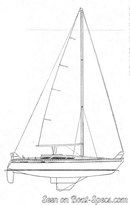




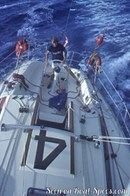


Jeanneau Sun Fizz interior and accommodations - - 8/12
Picture extracted from the commercial documentation © Jeanneau
Picture extracted from the commercial documentation © Jeanneau


Jeanneau Sun Fizz interior and accommodations - - 9/12
Picture extracted from the commercial documentation © Jeanneau
Picture extracted from the commercial documentation © Jeanneau
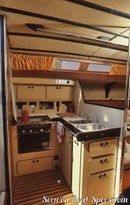

Jeanneau Sun Fizz interior and accommodations - - 10/12
Picture extracted from the commercial documentation © Jeanneau
Picture extracted from the commercial documentation © Jeanneau
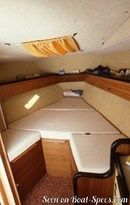

Jeanneau Sun Fizz interior and accommodations - - 11/12
Picture extracted from the commercial documentation © Jeanneau
Picture extracted from the commercial documentation © Jeanneau
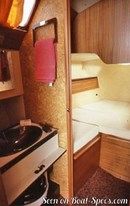

Jeanneau Sun Fizz interior and accommodations - - 12/12
Picture extracted from the commercial documentation © Jeanneau
Picture extracted from the commercial documentation © Jeanneau
Similar sailboats that may interest you:
Sailboats
First built hull
Hull length
1985
41’ 4”12.6 m
1987
43’13.1 m
1982
45’ 10”13.95 m
1982
35’ 11”10.95 m
1984
33’ 7”10.23 m
1982
36’ 4”11.07 m
1994
36’ 4”11.07 m
2008
37’ 4”11.38 m
1989
34’ 10”10.6 m
1983
35’ 5”10.8 m
1982
36’ 8”11.2 m
1983
36’ 5”11.1 m
1987
37’ 2”11.34 m
1982
35’ 11”10.95 m
1980
38’ 6”11.75 m